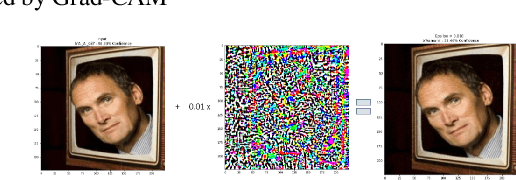Generalizing Adversarial Explanations with Grad-CAM
Paper and Code
Apr 11, 2022



Gradient-weighted Class Activation Mapping (Grad- CAM), is an example-based explanation method that provides a gradient activation heat map as an explanation for Convolution Neural Network (CNN) models. The drawback of this method is that it cannot be used to generalize CNN behaviour. In this paper, we present a novel method that extends Grad-CAM from example-based explanations to a method for explaining global model behaviour. This is achieved by introducing two new metrics, (i) Mean Observed Dissimilarity (MOD) and (ii) Variation in Dissimilarity (VID), for model generalization. These metrics are computed by comparing a Normalized Inverted Structural Similarity Index (NISSIM) metric of the Grad-CAM generated heatmap for samples from the original test set and samples from the adversarial test set. For our experiment, we study adversarial attacks on deep models such as VGG16, ResNet50, and ResNet101, and wide models such as InceptionNetv3 and XceptionNet using Fast Gradient Sign Method (FGSM). We then compute the metrics MOD and VID for the automatic face recognition (AFR) use case with the VGGFace2 dataset. We observe a consistent shift in the region highlighted in the Grad-CAM heatmap, reflecting its participation to the decision making, across all models under adversarial attacks. The proposed method can be used to understand adversarial attacks and explain the behaviour of black box CNN models for image analysis.
 Add to Chrome
Add to Chrome Add to Firefox
Add to Firefox Add to Edge
Add to Edge